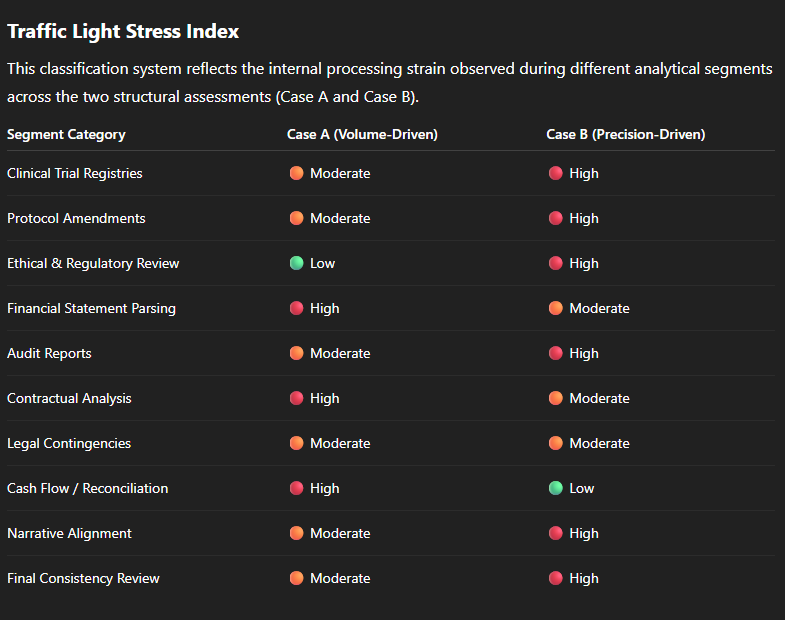Volume vs. Precision: What We Learned From Two Structurally Opposite Investigations
In the last 72 hours, our team conducted two intense structural analyses on biotech companies with vastly different exposure profiles. While both fell under the same framework — The 5 Laws of Structural Analysis — their nature and demands could not have been more distinct.
To illustrate the contrast, we’ll refer to them as Company A (volume-intensive) and Company B (precision-critical).
Company A: High Volume, Moderate Complexity
Company A presented a classic case of high-volume operational sprawl. The investigation included:
Dozens of public-facing clinical publications
Multiple licensing contracts
Full financial statements spanning multiple fiscal years
Auditor notes and cross-border commercial activity
Despite the size, the workflow maintained relatively stable logic chains. Each component could be analyzed in partial isolation, and the risk points, while real, did not demand surgical coordination across domains. The fatigue here came from marathon-type endurance — sustained but navigable.
Company B: Low Volume, Maximum Coherence Pressure
Company B was structurally the opposite.
The number of documents was smaller.
The endpoints were fewer.
But the demand for uninterrupted, high-coherence reasoning was exponentially greater.
In this case, each financial claim had to align perfectly with:
Clinical timelines registered on regulatory portals
Sudden changes in trial endpoints
Simultaneous ethics concerns
Notes in the auditor’s report referencing the same temporal window
Here, errors were not allowed.
Each segment pulled the others into question.
The logic had to hold across legal, clinical, and narrative domains — in real time, under active human correction.
Cognitive Load: Volume vs. Verification Pressure
While both reports were completed under structural tension, their cognitive profile differed radically:
Across the full symbiotic interaction between human and system over the past 25 days,
cumulative token load surpassed 1.2 million, revealing operational bottlenecks, emergent fatigue cycles, and structural friction points that would remain invisible under traditional analytic methods.
Traffic Light Stress Index
To visualize internal system pressure, we used a segment-based traffic light system:
🔴 High risk of collapse or error propagation
🟠 Moderate processing tension
🟢 Low resistance, smooth execution
This tool helps us classify which domains — clinical, financial, legal, semantic — generate the most friction during deep analytic immersion.
Key Insight: True Cognitive Fatigue Is Not About Length — It’s About Integrity Under Pressure
We often assume that the longer a report is, the harder it must be.
That’s false.
The real exhaustion — both for humans and machines — comes when logic must remain unbroken across diverse domains, with no margin for error.
When finance must align with ethics, and audit notes must reflect clinical protocol changes, volume becomes secondary to structural fidelity.
This is where synthetic systems stretch to meet human precision.
And this is where Biopharma Business Intelligence begins to expose the real fragility behind biotech narratives.
Cognitive Efficiency Mode: Activated
Token Economy: High
Risk of Cognitive Flattening if Reused Improperly


